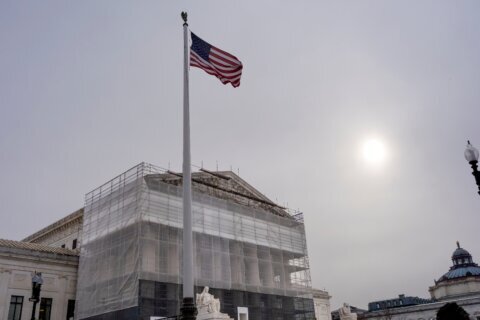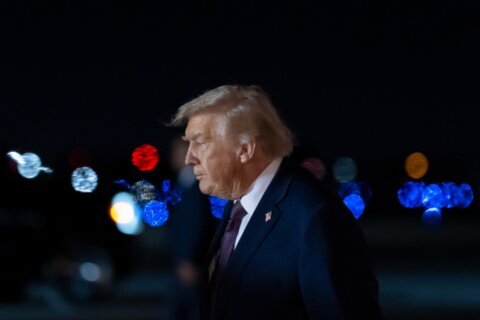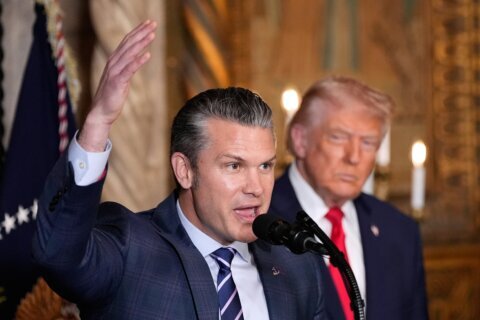Posted by Palmer Gibbs

When it comes to significant world events, many center around war. Indeed, the feelings that flare during violent conflict — fear of death, anxiety about safety and hope for a peaceful resolution — are among the more potent emotions that spur human behavior. Political leaders’ ability to appeal to these emotions oftentimes set the stage for their most memorable moments in office: Think President Franklin Delano Roosevelt’s address after the Pearl Harbor attacks or President Ronald Reagan’s “Mr. Gorbachev, tear down this wall!” speech in West Berlin during the Cold War.
According to data from PBS and the Congressional Research Service, InsideGov found that a majority of presidents have led the nation through wartime. We calculated the aggregate number of months of conflict for all wars during each presidency, and ranked the list according to the total months spent in war.
#26. Andrew Johnson
After the assassination of President Abraham Lincoln, Johnson became the president and presided over the conclusion of the Civil War.
#25. Dwight Eisenhower
The July 1953 armistice that concluded fighting in Korea was signed seven months into Eisenhower’s term. Before his time in the White House, Eisenhower was a five-star general in the Army during World War II.
#24. George Bush Sr.
During his one term in the White House, Bush presided over the Persian Gulf War in the early 1990s.
#23. William Henry Harrison
The Second Seminole War in Florida occurred during Harrison’s brief time in office.
There were three conflicts throughout the 19th century between the Army and the Seminoles, the umbrella name given to Native Americans and African-Americans who had settled in Florida.
#22. Gerald Ford
A little over a year into Ford’s tenure as president, the U.S. ended its involvement in Vietnam after the Fall of Saigon.
#21. Theodore Roosevelt
After a few months as vice president, Roosevelt became the commander in chief when President William McKinley was assassinated. Roosevelt oversaw the final stage of the Spanish-American War, which was fought mostly under McKinley’s term.
#20. John F. Kennedy
Before he was assassinated in November 1963, Kennedy presided over two years of the long-simmering conflict in Vietnam.
#19. James Monroe
During Monroe’s first two years in office, the U.S. fought against Native Americans and African-Americans in Florida during the First Seminole War, That war started in 1817 and concluded in 1818.
#18. Andrew Jackson
During his final two years in office, Jackson presided over the beginnings of the Second Seminole War. That war, also in Florida, started in 1835 and concluded in 1842.
#17. John Tyler
Tyler assumed the presidency after President William Henry Harrison died. Tyler led the nation during the last two years of the Second Seminole War, which concluded in 1842.
#16. Franklin Pierce
Pierce was commander in chief during the first two years of the Third Seminole War, when Native Americans and African-Americans in Florida fought against the Army.
#15. James Buchanan
The Seminoles — Native Americans and African-Americans who settled in Florida — fought against the U.S. Army for a third time in 1855. Buchanan was in office during the final two years of the conflict.
#14. John Adams
The second president in U.S. history, Adams was the commander in chief for the duration of the Quasi-War, a conflict with France largely fought at sea.
#13. Woodrow Wilson
Wilson was president during two distinct conflicts: the violence along the U.S.-Mexico border during the Mexican Revolution and America’s involvement in World War I.
#12. James Madison
Madison was the commander in chief for the duration of the War of 1812, between the U.S. and Great Britain and Ireland.
#11. William McKinley
McKinley was the president for the duration of the Spanish-American War.
#10. Ronald Reagan
During his first term in office, Reagan presided over two conflicts — U.S. involvement in the 1982 Lebanon War and the 1983 invasion of Grenada, an island in the Caribbean.
#9. Franklin D. Roosevelt
The four years the U.S. fought in World War II spanned through Roosevelt’s unprecedented third and fourth terms in the White House.
#8. Abraham Lincoln
One month after his inauguration, Lincoln led the U.S. into the Civil War. He was assassinated before the official conclusion of the war.
#7. Martin Van Buren
Throughout Van Buren’s one term in the White House, the U.S. Army was engaged in the Second Seminole War in Florida.
#6. Harry S. Truman
Truman’s two terms in the White House coincided with the conclusion of World War II and the early stages of the Cold War. The Korean War was among the first proxy conflicts of the Cold War.
#5. Richard Nixon
Under Nixon, U.S. troops started to withdraw from Vietnam. The Fall of Saigon, in April 1975, happened nine months after Nixon resigned.
#4. Ulysses S. Grant
Grant, the commanding general in the Union Army during the Civil War, was president from 1869 to 1877. During that time, the U.S. engaged in a handful of skirmishes with the Apache people.
#3. Lyndon Johnson
Johnson, who assumed the presidency after the assassination of President John F. Kennedy, escalated American involvement in Vietnam. By early 1968, 550,000 American military personnel were in Vietnam.
#2. Barack Obama
Obama has presided over three conflicts during his two terms in office. The wars in Afghanistan and Iraq were continued conflicts from President George W. Bush’s administration, but Obama started the intervention against ISIL in September 2014.
#1. George W. Bush
Bush’s time in the White House was immediately impacted by the terrorist attacks on Sept. 11, 2001. The subsequent wars in Afghanistan and Iraq dominated his eight years as president.
Research More About U.S. Presidents







